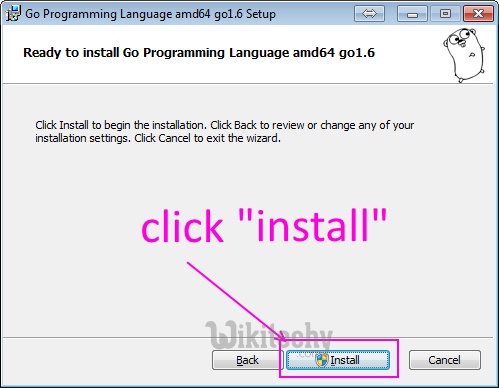

- #Homebrew install golang how to
- #Homebrew install golang update
- #Homebrew install golang upgrade
- #Homebrew install golang software
- #Homebrew install golang code
Try to stick with the native dnf package manager for Fedora to avoid software conflicts. Homebrew is a simple package manager that can be a helpful tool alongside dnf (The two are not related at all).
#Homebrew install golang update
To update Homebrew and all the installed Formulae to the latest versions, run: brew update Wrap Up
#Homebrew install golang upgrade
To upgrade a specific package installed with Homebrew, run: brew upgrade To uninstall a package from your Homebrew prefix, run: brew uninstall To get information about a formula, run: brew info Īlso, you can see all the installed formulae with the following command: brew list Uninstall Packages You can also search for formulae with: brew search For example, to install Minikube, simply run: brew install minikube

Replace with the name of the formula you want to install. To install a package using a formula on Homebrew, simply run: brew install It builds software from source using special Ruby scripts called formulae which look like this (Using wget package as an example): class Wget > ~/.bash_profileĮval "$(/home/linuxbrew/.linuxbrew/bin/brew shellenv)" Install and Investigate Packages Homebrew uses Ruby and Git behind the scenes. The author and the Fedora community are not responsible for any damages that might result directly or indirectly from following this article. However, do all the installations at your own risk. Homebrew packages usually run as a non-sudoer user and to a dedicated prefix so they are quite unlikely to cause harm or misconfigurations. You should always inspect the packages and binaries you are installing on your system.

In this article, I will try to show you how Homebrew is different from Fedora Linux package manager dnf, why you might want to install and use it on Fedora Linux, and how. This package manager works on Fedora Linux too. In addition, it installs packages only to its prefix (either /home/linuxbrew/.linuxbrew or ~/.linuxbrew) as a non-root user, without polluting system paths. It is written in Ruby and provides software packages that might not be provided by the host system (macOS or Linux), so it offers an auxiliary package manager besides the OS package manager. But, it can be used on Linux (and Windows WSL) as well. Note: Using this uninstall process for Windows will automatically remove Windows environment variables created by the original installation.Homebrew is a package manager for macOS to install UNIX tools on macOS. Uninstall using the command line by running the following command:.In Add/Remove Programs, select Go Programming Language, click Uninstall, then follow the prompts.įor removing Go with tools, you can also use the command line:.In Control Panel, double-click Add/Remove Programs.The simplest way to remove Go is via Add/Remove Programs in the Windows control panel: If you installed Go with the macOS package, remove the /etc/paths.d/go file. Under Linux and FreeBSD, edit /etc/profile or $HOME/.profile. Remove the Go bin directory from your PATH environment variable.You can remove Go from your system using the steps described in this topic. To uninstall a downloaded version, just remove the directory specified by its GOROOT environment variable and the goX.Y.Z binary. For example, run a command such as the following: When you have multiple versions installed, you can discover where each is installed, look at the version's GOROOT value. To run go commands with the newly-downloaded version, append the version number to the go command, as follows: The following example illustrates with version 1.10.7: To install additional Go versions, run the go install command, specifying the download location of the version you want to install. Note: To install using the method described here, you'll need to have git installed. For a list of versions you can install this way, see the download page.
#Homebrew install golang code
For example, you might want to test your code on multiple Go versions. You can install multiple Go versions on the same machine.
#Homebrew install golang how to
Installing Go from source - How to check out the sources, build them on your own machine, and run them.Download and install - The simplest way to get installed and running.This topic describes how to install multiple versions of Go on the same machine, as well as how to uninstall Go.įor other content on installing, you might be interested in:


 0 kommentar(er)
0 kommentar(er)
